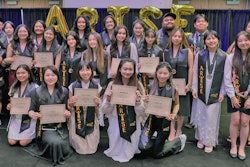Asian-American youth are often portrayed as the “model minority” who have perfect SAT scores and attend Ivy League schools, but there is a segment of the Asian American population who are low-income students struggling to become the first in their family to earn a college degree.
The University of California, Los Angeles has identified eight different groups of Asian Americans in their admissions applications, Dr. Don T. Nakanishi, director of the UCLA Asian American Studies Center, told Diverse.
“I think there are ways to find alternatives to race admissions after Proposition 209 in California and in other states,” Nakanishi says.
Earlier, Nakanishi led an online chat with readers of edweek.org on the academic performance of Asian Americans.
“I suspect the model minority myth will be with us for many more years to come. It first emerged in the 1960s, and it has been challenged by scholars, educational policy researchers, and others ever since,” he said.
Even though Asian Americans the model minority theory persists because examples of academic success, including the fact that most of the University of California campuses having student bodies that are over 40 percent Asian, those examples mask the experiences of Asians who are not doing as well.
“I agree that there is a need to disaggregate data on Asian Pacific Americans and to examine the very real and significant differences among ethnic groups, income levels, generations, etc. Hopefully, one can do this in a constructive manner,” Nakanishi said.
He also addressed the diversity of Asian American high school students and the obstacles they face in getting into college.
“A large number of Asian Pacific American students attend multiracial, low-income, as well as low-performing schools, and yet they are oftentimes compared with Asian Pacific American students who attend stronger academic schools, families with college-educated and more affluent parents, etc.,” Nakanishi says.
“I think there are admissions officers who are aware of the tremendous differences among Asian Pacific American students, and try their best to evaluate an applicant’s record in the context of the high school that they attend,” he says.
— By Shilpa Banerji
There is currently 1 comment on this story.
Click here to post a comment.
© Copyright 2005 by DiverseEducation.com


















